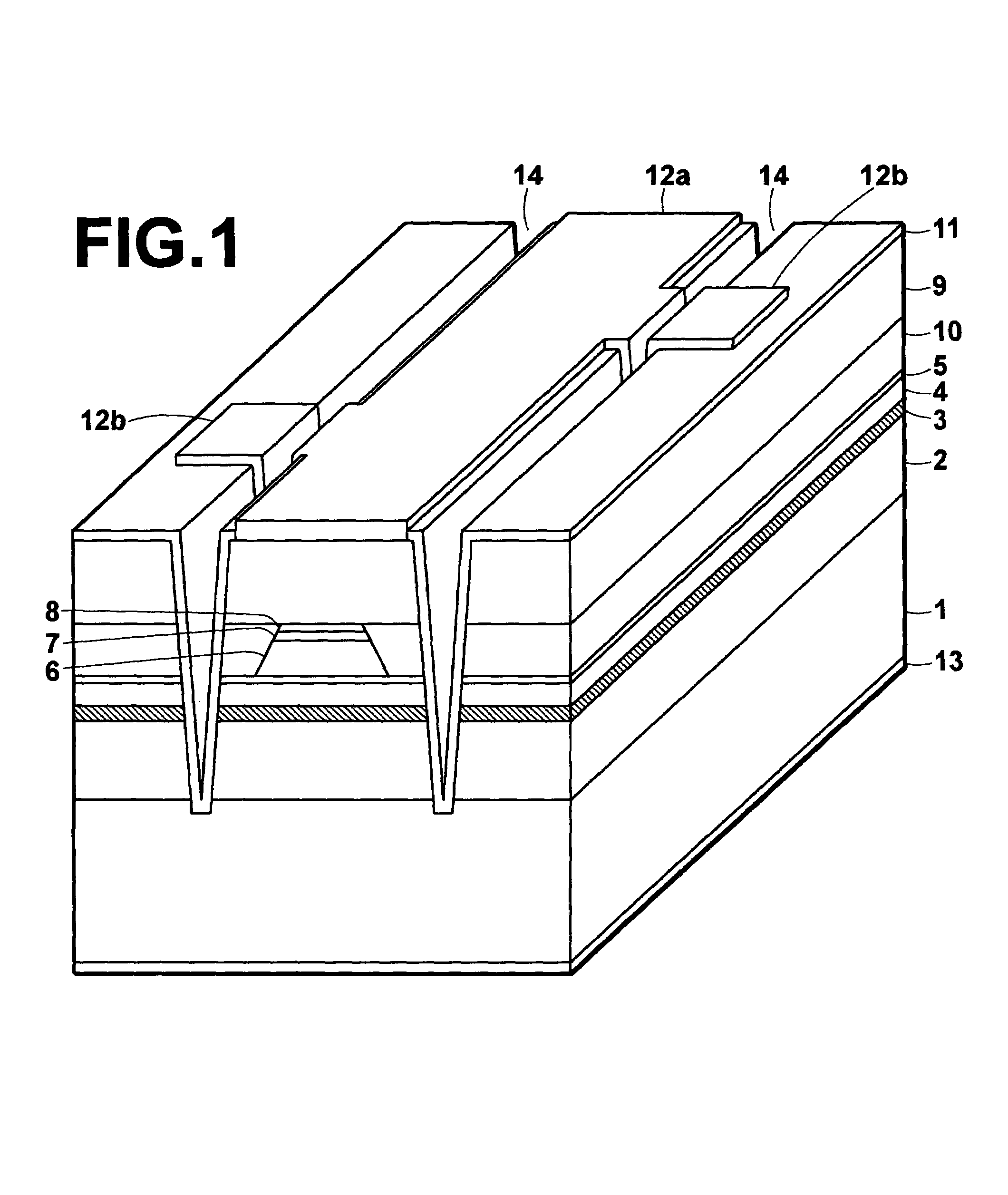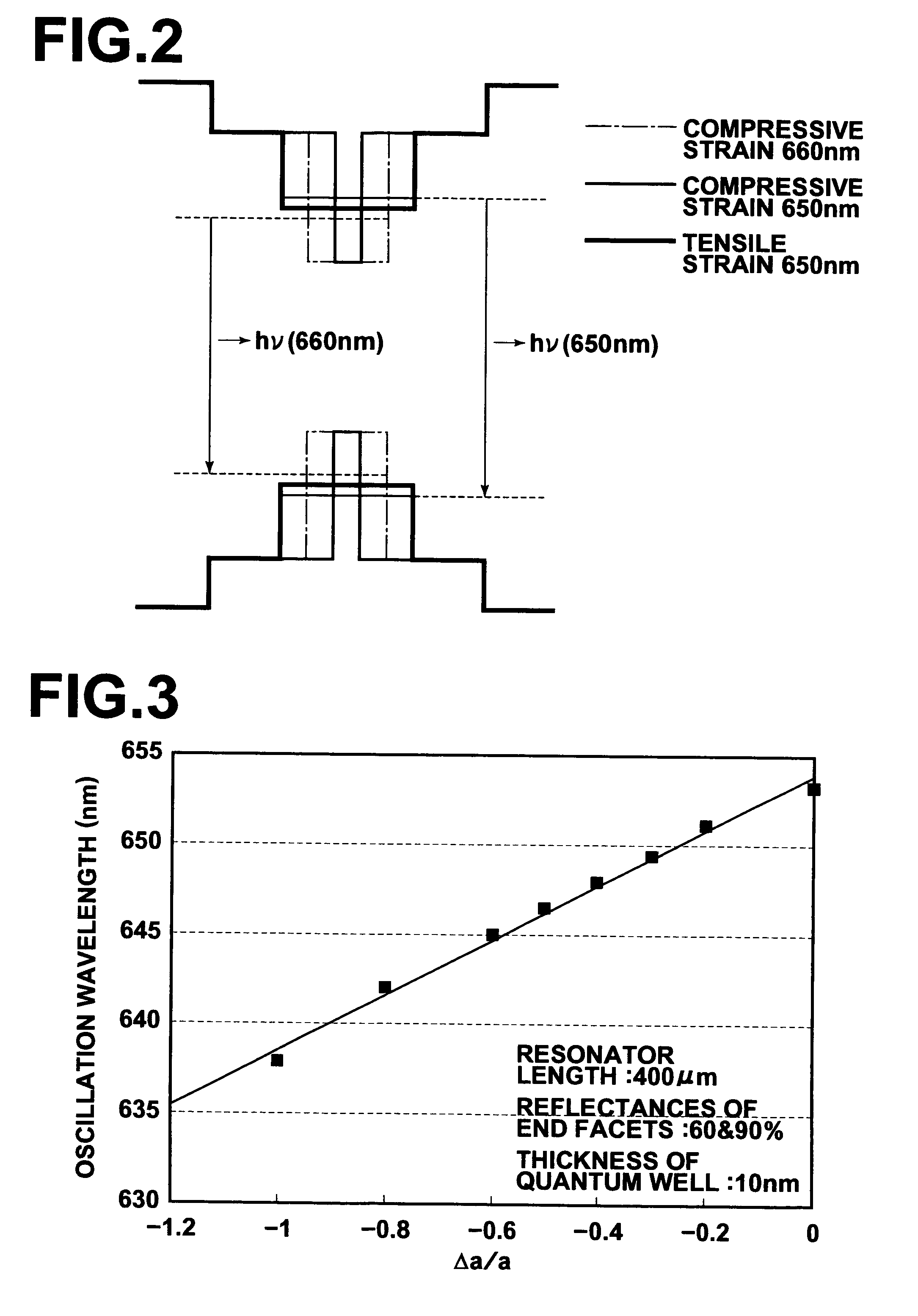Semiconductor laser element having tensile-strained quantum-well active layer
a quantum-well active layer, semiconductor laser technology, applied in the direction of lasers, semiconductor lasers, active medium materials, etc., can solve the problems of deterioration of the characteristics of the semiconductor laser, plastic fibers, and large internal loss, so as to reduce the threshold value, suppress the loss of mirrors, and achieve the effect of reducing the threshold valu
- Summary
- Abstract
- Description
- Claims
- Application Information
AI Technical Summary
Benefits of technology
Problems solved by technology
Method used
Image
Examples
Embodiment Construction
[0023]An embodiment of the present invention is explained in detail below with reference to drawings.
[0024]FIG. 1 is a schematic perspective view of the semiconductor laser element according to the embodiment of the present invention.
[0025]The semiconductor laser element according to the present embodiment is produced by forming a laser structure on an n-type GaAs substrate 1 having a principal plane the crystal orientation of which is tilted 15 degrees from (100) toward (011).
[0026]As illustrated in FIG. 1, the semiconductor laser element according to the present embodiment has a structure in which an n-type (AlxGa1-x)0.5In0.5P lower cladding layer 2 (x=0.7), a light-emission layer 3, a p-type (AlxGa1-x)0.5In0.5P first upper cladding layer 4 (x=0.7), and a p-type InGaP etching-stop layer 5 are formed in this order on the n-type GaAs substrate 1. It is preferable that the p-type InGaP etching-stop layer 5 is a tensile-strain InGaP layer so that the waveguide loss is reduced.
[0027]Fu...
PUM
 Login to View More
Login to View More Abstract
Description
Claims
Application Information
 Login to View More
Login to View More - R&D
- Intellectual Property
- Life Sciences
- Materials
- Tech Scout
- Unparalleled Data Quality
- Higher Quality Content
- 60% Fewer Hallucinations
Browse by: Latest US Patents, China's latest patents, Technical Efficacy Thesaurus, Application Domain, Technology Topic, Popular Technical Reports.
© 2025 PatSnap. All rights reserved.Legal|Privacy policy|Modern Slavery Act Transparency Statement|Sitemap|About US| Contact US: help@patsnap.com



